Review: Samsung Galaxy S5 Sport for Sprint
Aug 14, 2014, 9:30 AM by Eric M. Zeman
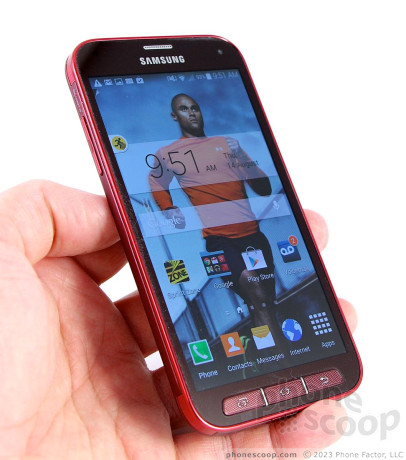
Samsung kicks out a fitness-oriented version of the Galaxy S5 for Sprint. This Android smartphone differs from the original model in a few respects. Phone Scoop takes it for a jog in this full report.
Form
Intro
The Samsung Galaxy S5 Sport is billed as a slightly amped up version of the Galaxy S5. It is somewhat more rugged thanks to the thicker casing and it has the same resistance to water and dust. If you want a Galaxy S5 and don't mind opting for something different from the standard model, the Sport is worth considering thanks to its fitness focus.
Editor's Note: Since the GS5 Sport is so similar to the GS5 and GS5 Active, portions of this review have been carried over from Phone Scoop's review of the GS5 Active. Rest assured, we put the GS5 Sport through our full battery of tests and added new text where relevant.
Body
The GS5 Sport from Sprint is surprisingly different from the GS5 Active from AT&T. It loses the Active's thicker, sturdier corners. The Active's outer edge is framed in hardened rubber. In contrast, the Sport's is simply a chunkier plastic shell that feels more solid than the standard GS5 model, but not as robust as the Active's. You could say the GS5 Sport sits between the GS5 and GS5 Active in terms of toughness, though it is much closer to the standard GS5 than the Active. That's a bit of a disappointment.
Where the GS5 has a chrome-colored band circling the outer edge, the Sport has a matte-finished polycarbonate frame. The phone has lots of textures and lines running all over the place. I find it somewhat disjointed-looking. The colored plastics are a nice change from black, but any device that has "Sport" branding needs to be either super sleek or much more rugged. Unlike the Active, I'd be afraid to drop the Sport. I certainly wouldn't kick it, throw it, or smack it with a hockey stick. These are things you can do with the Active. Skip the roughhousing with the Sport.
The Sport is a big phone. People with small hands may find it too big. The thick sides mean it doesn't rest comfortably in your hand, it doesn't nestle into your palm. You can feel just how wide the phone is. On the positive side, it feels robust. It should fit into most pockets without too much trouble, but the rim protecting the display means the phone is easy to feel against your leg as you move about.
The front surface is mostly screen. There's a chrome-colored strip above the display for the earpiece speaker. The Sport ditches the GS5's capacitive control buttons and fingerprint sensor for three regular buttons: multitask, home, and back. The buttons are easy to find with your thumb thanks to their good profiles and nice textures. Travel and feedback is excellent. The Sport loses the GS5's fingerprint reader, though.
The lock button is on the right edge, just above the center. It has an excellent profile and travel and feedback are practically perfect. I wish it didn't make such a loud "clacking" noise. There volume toggle is on the left edge. It is rather small and thin, but offers superb travel and feedback.
The battery cover takes some effort to peel off thanks to the gasket that protects the innards. It needs to be snapped firmly in place to protect the Sport from water. The battery cover is the same, dimpled band-aid-looking abhorrence as the standard model. The battery itself is removable and must be first yanked in order to access the SIM card and microSD card slots. The Sport will remind you, from time to time, to make sure the rear cover is firmly in place.
The microUSB port is on the bottom and has a hatch to protect it. The Sport isn't water resistant unless this hatch is firmly closed. I found this hatch to be a little bit of a pain to use day-in and day-out, but it's a worthwhile tradeoff. The headphone jack is on top and doesn't need a hatch. There is no camera button.
The Sport is slightly bigger and heavier than the standard model. It doesn't seem any more rugged to me, though, and some people might mistake it for a tougher phone than it is.
Performance
Screen
The Sport has the same 5.1-inch Super AMOLED full HD display that the GS5 does. I held the Sport side-by-side with the standard model and couldn't see any difference at all between them. The display is fantastic through and through. I have no complaints whatsoever. It is large, pixel-rich, colorful, and bright. I didn't have any trouble using it indoors or out. All of the graphics and UI elements are smooth and show no signs of pixelated edges. It's a truly good screen.
Signal
The GS5 Sport is an exclusive for Sprint. I used the Sport throughout the NYC metro area and it performed very well. The phone behaved in line with other Sprint devices I've tested in the region and sometimes surpassed them. In areas with strong coverage, it found LTE and hung on. In areas with weak coverage, the Sport typically dropped down to 3G. When on LTE, data speeds were fast. Sprint Spark regions made more of a difference on the Sport than I've noticed on other Sprint devices. Speeds were appreciably quicker. When on 3G, data speeds were soul-crushingly slow. I was able to connect most calls on the first dial. The Sport didn't drop any calls during my review period.
Sound
The Sport is a good phone for making voice calls. The earpiece produces clear voices that I had no problem understanding. There was no interference of any kind and no background noise; only the other person's voice. I was slightly disappointed with the earpiece volume, which was about on par with that of the standard GS5. You need to set the volume all the way up for most calls, which can be hard to hear in noisy spaces. The quality of calls dips only slightly when sent to the speakerphone. The speakerphone's volume is acceptable, but not the best I've heard. The Sport supports background noise elimination, which means the people I spoke to through the device said I sounded great. Ringers and alert tones offer plenty of volume to get your attention. The vibrate alert is particularly strong. What's better, you can control the intensity of the vibrate alert for calls, messages, and so on. Like other GS5 models, the Sport includes 6 pre-recorded vibrate patterns and allows owners to create their own.
Battery
The Sport's battery life is the same as the other GS5 models, which is to say fantastic. The device easily lasted from breakfast to bedtime and often had power to spare. Most owners should have no trouble with the Sport's battery.
The Sport also includes a power saver mode - and an ultra power saver mode - that can be used to extend the useful life of the phone. The power saver can be toggled on manually - or automatically - once the battery reaches 20%. Users can opt to block background data, restrict performance (ramp down the processor), or set the display to grayscale mode. Ultra power saving mode takes it a lot further. It sets the screen in grayscale mode, turns off all data when the screen is off, turns off Wi-Fi and Bluetooth, and only permits six user-selected apps to function, three of which are phone, messaging, and email. Power saver mode and extreme power saver mode will provide estimates (when switched on) of how long the phone will continue to function based on the remaining charge.
Samsung appears to have mastered power management.
Basics
Menus
Hardware aside, the Sport differs very little from the GS5 when it comes to the operating system, apps, and services on board. It runs Android 4.4.2 KitKat with Samsung's TouchWiz user interface on top. It will feel familiar if you're coming from any other Galaxy-branded Samsung device.
The Sport's home screen panels are completely customizable, and the app menu can display apps in an alphabetical grid, in a custom grid, or in an alphabetical list. You can make use of folders to keep the app menu (and home screens) organized.
By default, the lock screen includes a shortcut to the camera, but you can add more if you want. The lock screen can show one or two clocks, the date and weather, select notifications, and a series of different locks (PIN, password, or pattern).
Samsung made a jumble out of the easy-to-use settings tools provided by Google in favor of an icon-laden screen that's ridiculously annoying. I want to find and adjust settings quickly. I don't want to hunt for them. The TouchWiz settings panel is far too confusing. It attempts to lump certain settings together (such as wireless radios), but duplicates the controls several times throughout. Thankfully, the settings view can be changed to a list or a tab.
The notification tray adopts the settings panel's design language, but the effect is much different. The icons and toggles are easy to read and discern from one another. I do dislike how much junk has become part of the notification tray, though. In addition to toggles for the radios and other controls, there's a brightness slider, another row of controls, and then the notifications. The extra controls take away valuable real estate from the actual notifications. The Sport includes Samsung's multiwindow view for multitasking. It can run two apps side-by-side on the screen and even allows you to drag content from one app to the other.
The Sport includes Samsung's Easy Mode, which is an optional, dramatically simplified user interface. It's meant for first-time smartphone owners and helps them get over the initial hump of using a touch screen device. The phone also offers a one-handed mode, which shrinks the UI down by about 25% and lumps it into one corner. The idea behind one-handed operation is to make elements such as the keyboard, dialpad, and other controls easier to reach with your thumb. The one-handed mode can be turned on with a quick (very quick) back-and-forth swiping gesture. It took one or two practice swipes to get it correct, but once learned, it worked without issue.
Last, the Sport includes Sprint iD. Sprint iD, which has been around for several years, lets users download theme packs. The packs often include wallpapers, ringtones, and apps centered on a specific theme or idea. The service functions fine on the Sport, but I find the packs also include unwanted third-party apps that can clutter up the phone.
The Sport includes the same quad-core Snapdragon 801 processor found in the GS5. It's a beast and makes short work of any task you assign it. The Sport is fast across the board and never felt slow or laggy.
Calls and Contacts
The Sport's phone app is more or less the stock version of the Android dialer, but it's reskinned with Samsung's TouchWiz UI effects. It offers plenty of customization options that allow owners to make the phone's behavior suit their needs. When the dial pad is visible, tap the menu button to see an options screen for the phone. Here is where to set rejection behaviors, alerts, answering/ending calls, set up voicemail, and control the TTY functions. You can turn on/off noise cancellation, as well as dial in your own preferences for volume, clarity, and warmth.
The Sport is one of a few phones that supports Wi-Fi calling for Sprint. The app and service are a bit of a pain to setup. It forces you to enter an e-signature to accept the terms of service, which is going too far in my book. However, once enabled, Wi-Fi calling is added to the main phone app itself. The app makes it clear when you're passing a phone call over the cellular network or over your local Wi-Fi network. Call quality over Wi-Fi was slightly better than over Sprint's cellular network.
The contact app plops favorites in a tab at the top of the phone app. A second tab provides access to the entire contact database. The Sport includes home screen shortcuts for direct access to individual contacts on the home screen panel, but there isn't a larger widget for your favorite contacts.
Messaging
Sprint has set the stock Android messaging app as the default for SMS/MMS. Since Google now lets Android device owners pick which app they want to use for SMS, you can ditch the stock app if you want and use the Google+ Hangouts instead. Hangouts combines SMS and instant messaging conversations together in one app.
The Sport includes the Sprint Framily Wall app. This app acts as a messaging board for subscribers to Sprint's Framily plans. People who share an account can leave notes for all members of the group or for individuals. It can also hook into the calendar for sharing events.
Sprint also included Messaging+, a third-party messaging app that can handle SMS/MMS, as well as Facebook messages and Twitter DMs. It's a little clunky, but may consolidate most your messaging into a single app.
Neither Facebook nor Twitter is pre-installed, so you'll have to download them from the Play Store yourself.
My Magazine
The Sport includes a new-ish app from Samsung called My Magazine. Like HTC's Blinkfeed, My Magazine consumes one of the Sport's home screen panels. By default, it is set to pull down select headlines from a few different sources and create a visually pleasing magazine spread with them. You can adjust the news sources and tie in your own social networking accounts. Both Flipboard and Blinkfeed offer a much larger pool of potential content sources, though. Samsung's My Magazine is limited to generic feeds rather than specific ones. For example, there's a "Music" feed, but not a "Rolling Stone" feed. My Magazine can hook into Twitter, Facebook, YouTube, Tumblr, LinkedIn, Google+, Flickr, 500pix, RenRen, and SINA Weibo. If you're the type who likes to consume content from numerous sources in one feed, My Magazine gets the job done.
Extras
Media
The Sport includes the stock Google-made Play apps. The Google music, video, TV, book, and magazine stores are all fine places from which to rent or purchase content. The individual apps to consume them are decent and haven't changed in quite some time. The Sport also includes the standard YouTube app, a generic MP3 player for sideloaded music, and a generic video player for sideloaded video.
The Sport carries over Samsung's Smart Remote app. Smart Remote can both control your home theater equipment and also peruse various content sources for something good to watch. Setting up the remote is a cinch. It walks you through the process of pairing with various devices and doesn't take more than a few moments to lasso control over your TV, cable box/DVR, Blu-Ray player, and receiver. The app's "smarts" come from the Peel engine. Answer a few questions and the app will be able to interact with all the content from your cable provider, as well as view schedules in advance, interact with the DVR, and so on.
Sprint was sure to bundle in a ton of its preferred apps, as well. You'll find NASCAR Mobile, NBA Game Time, NextRadio, Spotify, Sprint Music Plus, and Sprint TV & Movies. The NextRadio and Spotify apps are for streaming music, and Sprint TV & Movies is for streaming video content. These apps suffered under 3G, but worked passably when the Sport was able to connect to LTE or Wi-Fi. Sprint Music Plus is a for-pay ringback tone service.
Camera
The Sport may not have a dedicated camera button, but the excellent camera application opens in a jiffy from the lock screen.
The viewfinder fills the entire screen; the controls float within. There are some quick settings available on the left side of the screen, including a toggle for the user-facing camera, selective focus, HDR, and the full settings. The action buttons on the right include a dedicated video camera button, a separate shutter button, and access to the various shooting modes and gallery.
The full settings are organized in a grid of icons. It is easy to interact with them and understand exactly how changes you make will affect the outcome. Further, it is customizable; You can drag the icons for the settings around in the grid and arrange them however you like. The Sport offers control over picture size/resolution, metering modes, stabilization, timer, white balance, exposure, guidelines, shutter sound, and on. Basically, everything you need is there.
The Sport has six different shooting modes preinstalled. They are auto, beauty face, shot & more, panorama, virtual tour, and dual camera. There is also a link in the mode listing to the Samsung app store where you can download more modes if you want, such as sports mode, which isn't preinstalled.
Samsung was smart to make the HDR feature accessible all the time. You can turn it on or off quickly when needed, and I find that really helpful. The same goes for the selective focus control. Like Nokia's ReFocus tool or a Lytro camera, selective focus lets you blur the background while the foreground is in focus and vice versa. You need to have a clearly defined subject and background in order for the feature to really work. Images turn out best if you are really close to the main subject. In fact, Samsung recommends you be about 1.5 feet away, with the background object at least 5 feet from the foreground subject. You can set the foreground to be in focus, the background to be in focus, or both to be in focus after the fact. This shooting mode also takes a little bit of practice to use properly, but the results are cool.
Just like the GS5, the Sport has the picture stabilization tool on by default. I suggest you deactivate it because it really bogs down the speed of the camera. Every shot takes several seconds to focus and capture. When turned off, the Sport's camera will focus almost instantly and can take pictures as fast as you can press the shutter button.
Photos
The Sport captures images as large as 16 megapixels in the 16:9 aspect ratio or 12 megapixels in the 4:3 ratio. I was pleased with the shots I got. I didn't see any appreciable difference when compared to the results I obtained with the regular GS5 or GS5 Active. The Sport delivered razor-sharp focus, good exposures, and accurate white balance. In general, the pictures are better than those I got with the HTC One. Most people will be pleased with the shots they take, even if all they ever do is use the automatic mode. Sport owners who take time to explore the different shooting modes will be rewarded with images that go beyond the ordinary.
The front camera does a good job, too.
Video
The Sport can shoot 4K (Ultra HD) video, but it's wasted without a 4K TV on which to view it. Skip recording in 4K entirely unless you have a monitor that can show it. The 1080p HD video that I captured looked great. I was really impressed with the quality of focus, exposure, and white balance. The results accurately represent the real-world scene I recorded. Your YouTube fans will be impressed, no doubt.
Gallery
Samsung's gallery app offers some fun extra features. The Sport will automatically sync thumbnails from your Google+ and Dropbox accounts, but you can thankfully turn these off. There's a drop-down menu accessible from a button at the top of the screen for sorting between albums.
When you dive down into the individual galleries, the Sport goes into a split-screen mode: a vertical list of other galleries forms a strip along the left edge of the screen, and the rest is reserved to show larger thumbnails of the images in the gallery you chose to view. You have to press one of the thumbnail images to go into a full-screen view of that image. The entire screen of thumbnails can be pinched to make them smaller or enlarged. Once you open a single image, you can swipe through photos and share quite easily thanks to the numerous options in the gallery app.
The editing features are extensive. Not only does the Sport offer crop, resize, and rotate, but it includes a number of handy tools for making OK photos exceptional. It allows users to adjust brightness, contrast, saturation, and red/green levels. It includes a number of Instagram-like effects. There's a suite of tools for touching up portraits, such as red-eye reduction, airbrushing, and blurring. Now you have no excuse to look like an unkempt mess in your selfies.
The Sport also includes the Google+ Photos app, which can be used to sync and backup images to your Google account. Google+ Photos also includes the nifty Auto-Awesome feature for making GIFs and other improvements.
Activity Zone
One app on the Sport that's not available to the standard GS5 is the Activity Zone. This app lets you tap into the Sport's outdoorsy sensors, and more. The basic info screen shows you the elevation, barometric pressure, and compass. There are two large buttons that toggle on/off the flashlight or stopwatch. Them there's a dropdown menu accessible from the top-left corner that lets you drill down into each of these individual tools to get more detailed readings and measurements.
The Activity Zone also automatically finds other apps that tie into activities, such as Samsung's own S Health. The two can share information to enhance your view of your activities, exercise, and health. For example, it might be helpful to know that perhaps you're more winded than normal because you're at a higher elevation and the humidity is nearing 100%.
(Activity Zone is also found on the GS5 Active.)
Apps
Sprint stacked the Sport with plenty of annoying apps. Some include Eureka Offers, Flipboard, Lookout Security, Scout, and Sprint Zone. Sprint Zone is a collection of separate apps that Sprint believes its customers might find useful.The Sport includes a Samsung app store where you can download all the Samsung apps you want.
The Sport carries over features such as Air View, Smart Stay, S Finder, S Voice, and multi-window for running two apps at a time. Samsung included a data usage tool so you can monitor how much data you consume in a given day, week, or month. Sharing content from the Sport to other screens is easy thanks to a screen-mirroring tool. Music and video content can be pushed to TVs and stereo systems via Samsung Link. It is brain-dead easy to use and can connect to most any nearby device.
The phone comes with what Samsung calls Blocking Mode. It's basically a Do Not Disturb function. It lets you set times when notifications are turned off. The app allows you to select certain contacts who will be able to reach you even if all others are blocked. Blocking Mode can be controlled manually, or set to turn on and off at certain times each day.
Bluetooth
The Sport supports Bluetooth 4.0 LE. I was able to pair it successfully with a number of different devices, including headsets and speakers, as well as other smartphones and PCs. Phone calls routed to a headset offered excellent quality. Since the Sport supports the aptX profile, music sounded amazing coming from aptX Bluetooth speakers.
Browser
The Sport comes with both the generic Android browser and Chrome. The generic browser is "enhanced" with the Lumen Toolbar. Basically, the Lumen Toolbar adds browser extensions that improve the performance of the browser when it comes to content, such as games and videos. It also adds easy sharing tools, newsfeed shortcuts, and recommendations. I didn't find it to be all that helpful, and thankfully you can turn it off. You can also choose to apply Lumen to Chrome if you want.
Both the stock browser and Chrome do a fine job of rendering web sites whether you use the Lumen toolbar or not. Speeds on Sprint's LTE network are decent when it comes time to browse. Browsing on 3G — which happened more than I'd like — feels like a death sentence.
Clock
You can choose to put a clock on the lock screen or not. It's your call. If you do, it'll be a large, white, digital one. The weather can be paired with it, which shows the current conditions wherever the Sport happens to be. I wish you had more control over the lock screen clock.
GPS
Scout and Google Maps are both preloaded. The Sport performed excellently as a navigation tool. It pinpointed me in about 5 seconds consistently, and had no trouble plotting routes and finding nearby points of interest. Scout is really useful when it comes to searching for nearby points of interest, such as restaurants, gas stations, ATMs, and so on. Google Maps and Scout are free.
Private Mode
The Sport includes Private Mode, a special, sealed-away part of the OS that is password protected. Private Mode is mainly meant to protect sensitive files. It can interact with the photo gallery, the Google+ Photo app, the MP3 and video player apps, as well as the file browser. You can, in effect, hide pictures, songs, and videos you don't want others to see or hear. Though privatized pictures will technically exist in the gallery app, they can only be viewed when in private mode. Private Mode can come in handy for those who may want to keep some adult content on their device and take comfort that others won't be able to view it.
S Health
S Health taps into a bevy of sensors and can be used as a fitness pal and diet planner all in one. S Health forces you to create a profile, including your age, sex, height, and weight. It automatically calculates your body mass index and asks how active you are in general. You can use the app to track walks, runs, hikes, and bike rides. The Sport has a built-in pedometer and heart rate monitor. Pair these with the calorie tracker and you really have a good idea of your fitness level. I found the pedometer to be fairly accurate at counting steps and measuring approximate distances. The heart rate monitor was also accurate, as it delivered the same result that my treadmill did. The one bummer is that you have to be still to track your heart rate. This means you can't track while you're actually working out. You have to stand still for 30 seconds with your finger on the sensor to get an accurate reading.
The food tracker is highly detailed and lets you be explicit in monitoring your diet. For example, I was able to pick out the exact brand of yogurt I ate for breakfast, including the flavor! The food tracker can find nearly anything you search for, which is very helpful if you're monitoring calories strictly. You can track breakfast, lunch, dinner, and snacks. The software automatically knows how many calories you need to consume to maintain your current weight. It can help you set limits if you actually want to lose weight.
Sprint Fit
If S Health and Activity tracker aren't enough for you, you'll be happy to know the Sport also includes Sprint Fit. Sprint Fit merges features of MapMyFitness, S Health, Smart Health, and Spotify to create workouts complete with playlists and recommendations on diet and exercise. You have to create a MapMayFitness account in order to use it, which I find rather annoying. Further, the Spotify portion of the service doesn't work unless you sign up for at least the basic version of Spotify. Quite honestly, it's one fitness app too many.
The service is available directly from the home screen panels thanks to two ever-present widgets. One sits in the upper left corner and works akin to turning a page in a magazine. You grab the corner with your finger and swipe diagonally downward to open the full Sprint Fit Suite of apps. The second appears as a little bookmark along the left edge of the screen. Tap it, and a small widget opens with a dashboard containing info about your latest walk, health articles, and so on. Perhaps the best aspect of these tools are that MapMyX MVP is being offered for free to Sport owners for one year. The MVP version of MapMyX includes a broader range of features, such as heart rate analysis, aaudio coaching, and interval training.
Wrap-Up
Like the Galaxy S5, the Galaxy S5 Sport is a solid device and good all-around smartphone. It manages to score well on all the basics and then some. The hardware is decent, the screen amazing, and call quality, battery life, and data performance all shine.
The TouchWiz-enhanced user interface is a jumble of sorts, but offers incredible flexibility when it comes to personalization. The GS5 Sport might have a slightly steeper learning curve than other devices, but power users will appreciate the possibilities once they make the climb. The media options are solid, and the camera does a great job.
But I find the Samsung Galaxy S5 Sport to be a bit puzzling.
At the end of the day, the GS5 Sport just isn't different enough from the standard GS5 to warrant its existence. The modified shell is really the only significant thing that differentiates the GS5 Sport from the Galaxy S5, and that's not enough for me.
You can't go wrong with the Galaxy S5 Sport, but you can't go wrong with the Galaxy S5, either.
Comments
Not Impressed.......
I have 8 phones all with Sprint since 1998. As soon as the iPhone6 comes out (some of my family are iPhone users) I'm moving to Verizon.
Had it with Sprint's LTE Coverage and even 3G. I've never received a LTE signal in my own home and I'm surrounded by other carrier signals. I often have to walk outside on the porch to make a phone call. I'm in a developed area outside Columbus Ohio.
I'm going to Verizon period and this phone isn't available for Verizon. Still can't figure out Samsung's silly strategy, but it seems to be...
(continues)
Why not look into T-Mo? At&t and Verizon do not deserve new accou...
(continues)


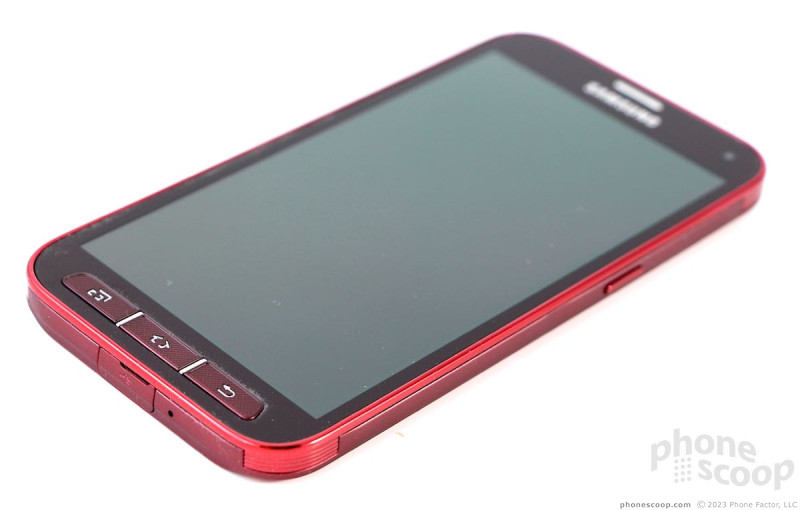















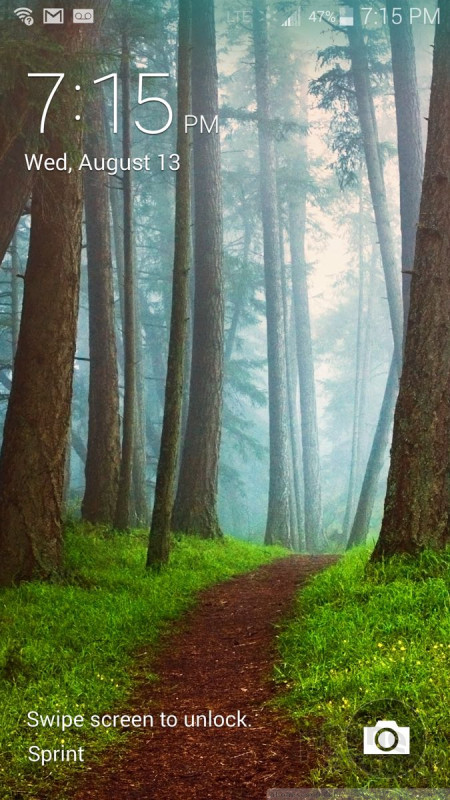











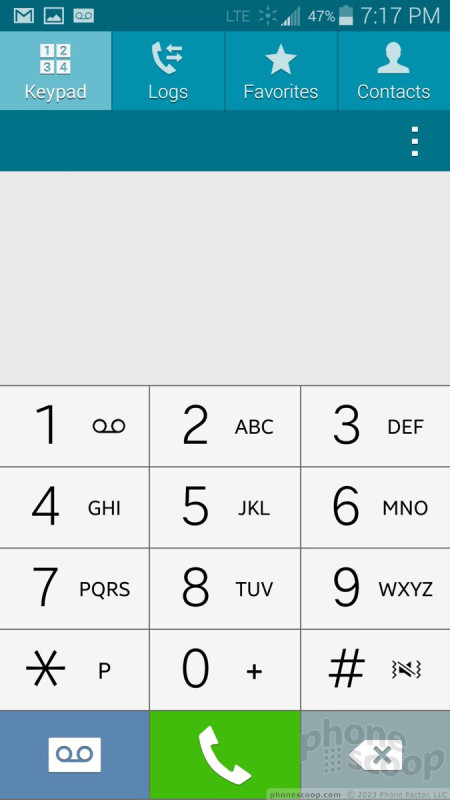









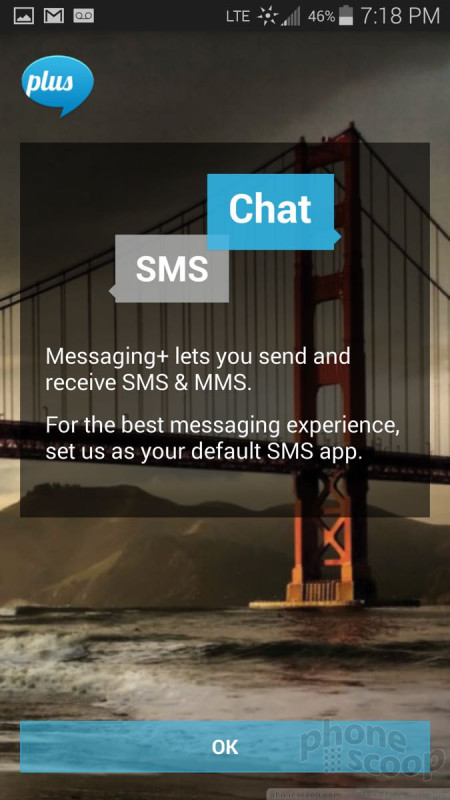









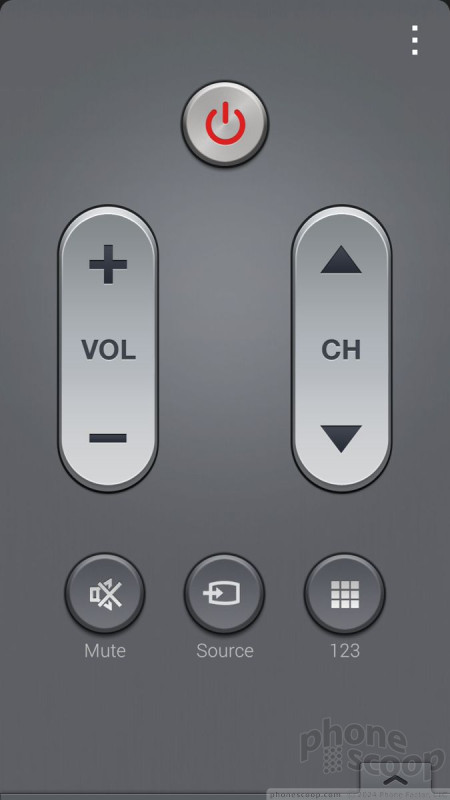








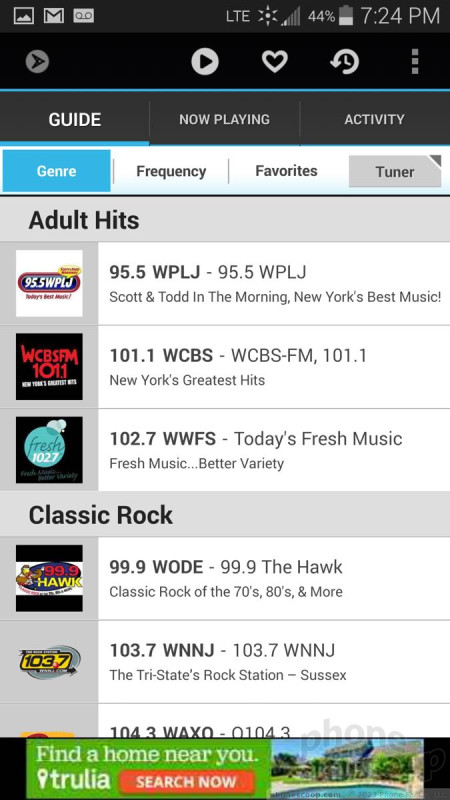






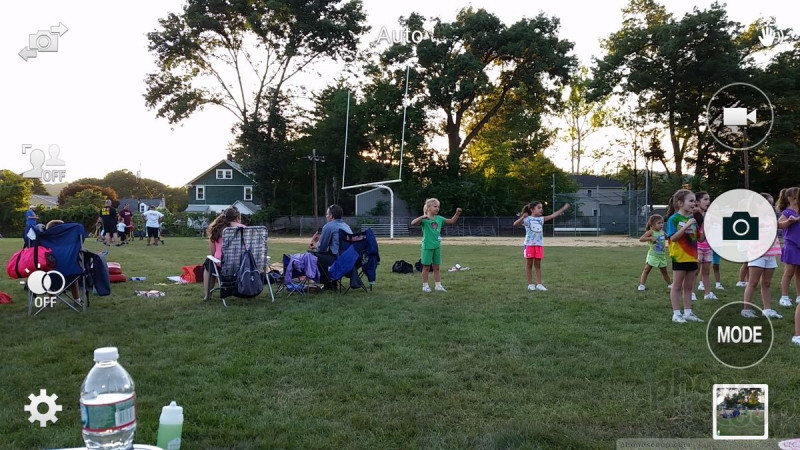














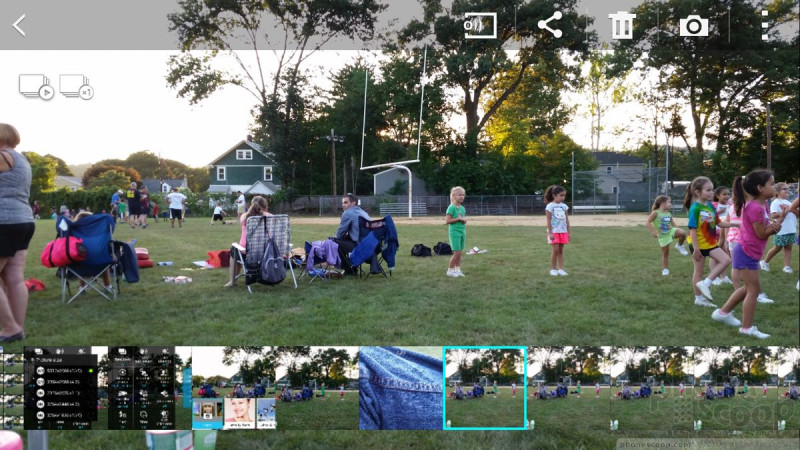






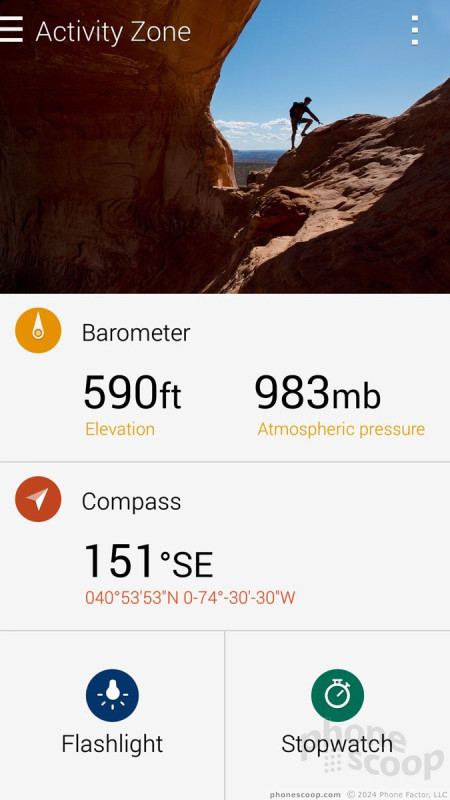






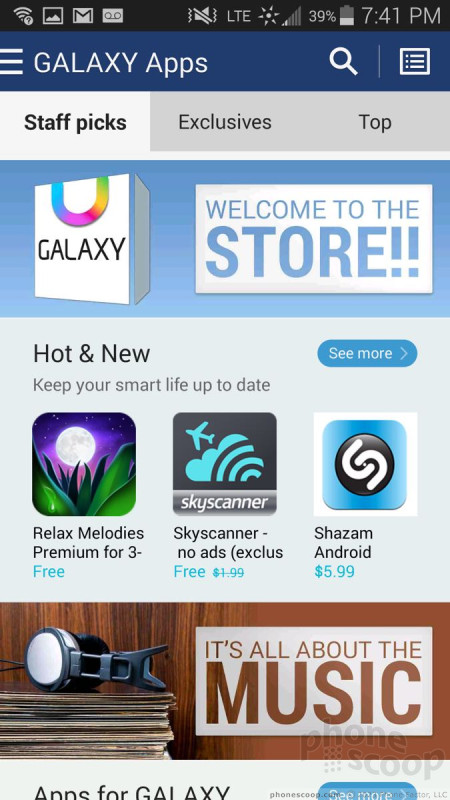












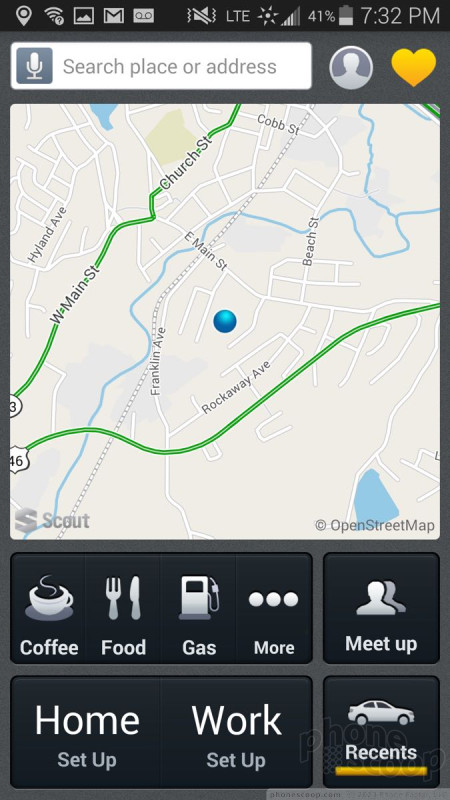




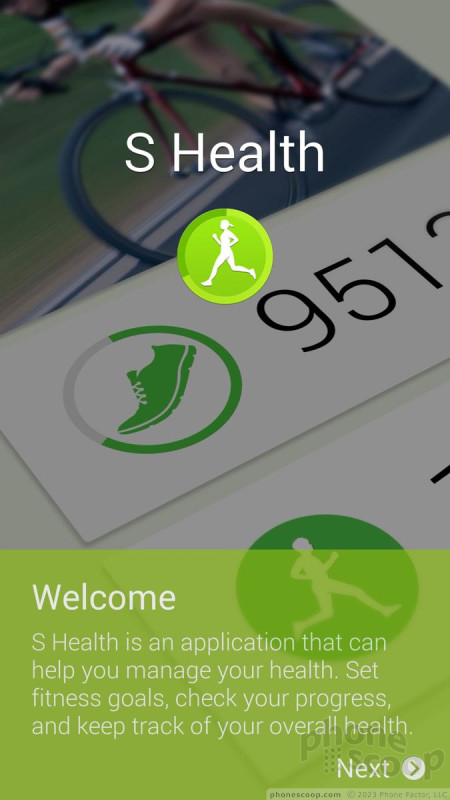





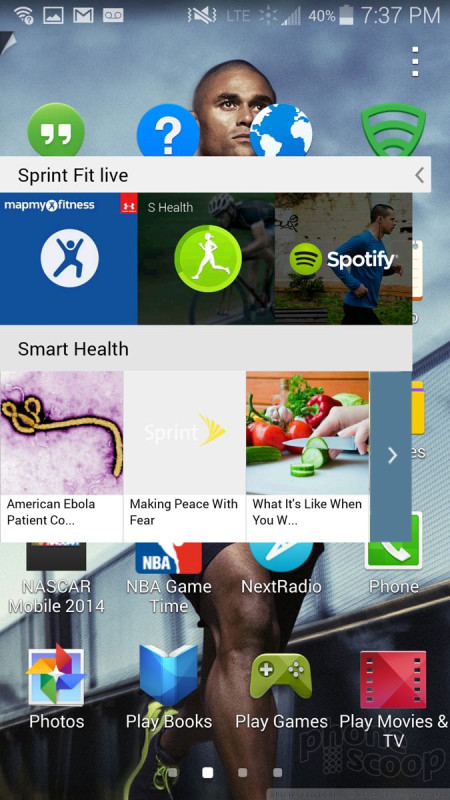



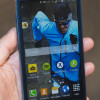 Hands On with Samsung's Galaxy S5 Sport for Sprint
Hands On with Samsung's Galaxy S5 Sport for Sprint
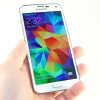 Review: Samsung Galaxy S5 for Verizon Wireless
Review: Samsung Galaxy S5 for Verizon Wireless
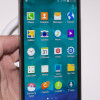 Hands-On: Samsung Galaxy S5
Hands-On: Samsung Galaxy S5
 Verizon Begins Updating Samsung Galaxy S5 to Lollipop
Verizon Begins Updating Samsung Galaxy S5 to Lollipop
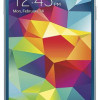 Best Buy Scores Electric Blue Galaxy S5
Best Buy Scores Electric Blue Galaxy S5
 Samsung Galaxy S5 (CDMA) / Galaxy S5 Sport
Samsung Galaxy S5 (CDMA) / Galaxy S5 Sport




